
News
Published on 20 Sep 2021
James Willoughby
Drones And DEMs vs DTMs vs DSMs
Guide to Digital Terrain Models, Digital Elevation Models and Digital Surface Models for drone surveying: What they are, their differences, applications, and how drone LiDAR and photogrammetry can help. ... Read More

If you're using a drone for surveying, there's every chance you'll come across the terms Digital Terrain Model, Digital Elevation Model and Digital Surface Model.
But what exactly are they, what are the differences, and how can they help?
Continue reading to find out.
Digital Elevation Models
Digital Elevation Models, also known as DEMs, are a visual representation of the elevation data for every point captured on your site.
Instead of depicting how your site actually appears in person, DEMs generally use colour to indicate differences in elevation - as this image shows.
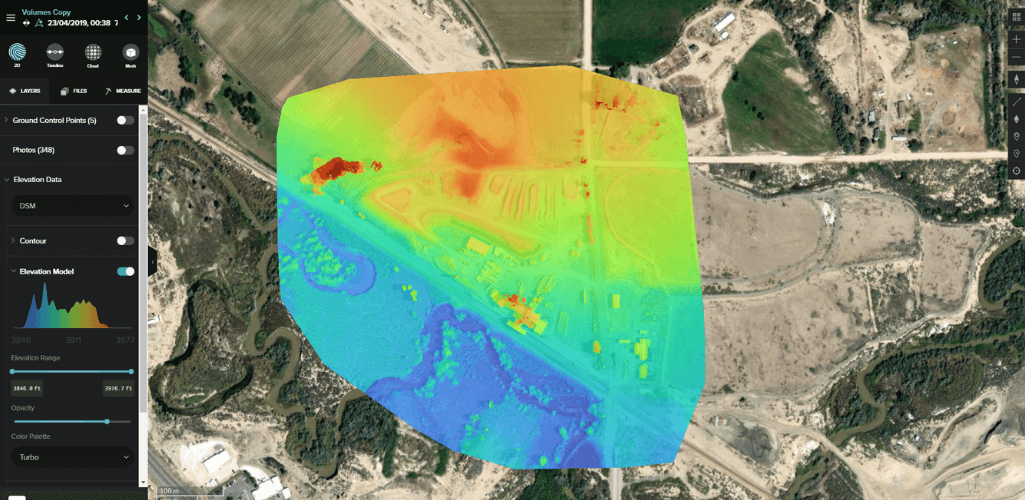
DEMs are raster datasets, or grids that list the highest vertical point (z) recorded for every horizontal coordinate (x,y).
The smaller the grid cells, the more detailed the information is within a DEM data file. So, if you’re looking to model with lots of detail, then small grid spacing (or small cell size) is the one to go for.
When visualised, these raster files depict the shape of your site’s terrain, which can be used as a reference for the topography you’re working on.
Digital Surface Models And Digital Terrain Models
Digital Elevation Models (DEM) are a superset of both Digital Terrain Models (DTM) and Digital Surface Models (DSM).
So what is the difference between a DTM and DSM?
DTM: A bare-earth surface model. In other words, featuring purely the terrain and ground.
DSM: The most general form of surface model that includes all acquired points, representing natural and man-made features. A DSM includes the tops of buildings, trees, powerlines and other objects. In essence, it is a canopy model, and only sees the ground when nothing else is above it.
The below graphic is a simple diagram showing the differences between a DTM and DSM. Notice how the DTM (orange line) follows the ground, whereas the DSM (green line) follows the structures on the surface, ie the top of the house and the tree.
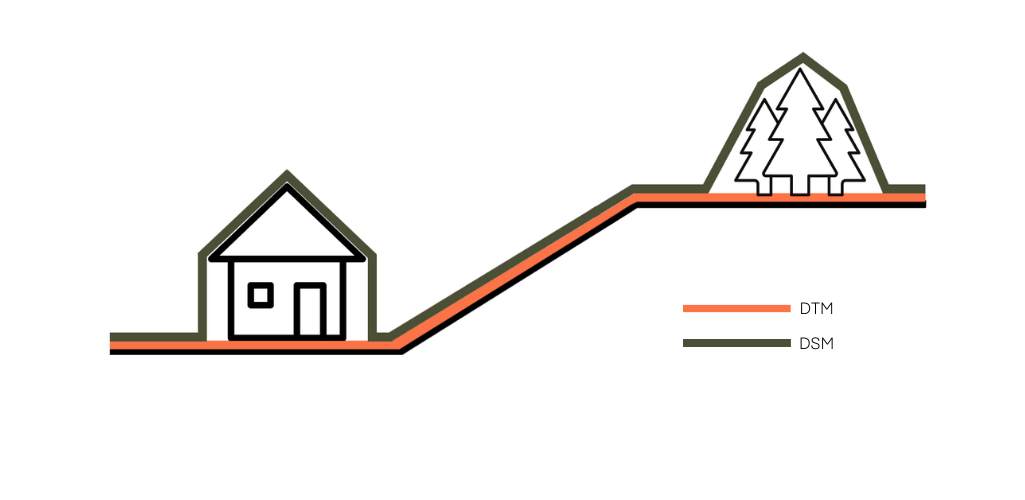
So how does this relate to a real-life dataset? The below example demonstrates this - with the DTM on the left and the identical DSM on the right.
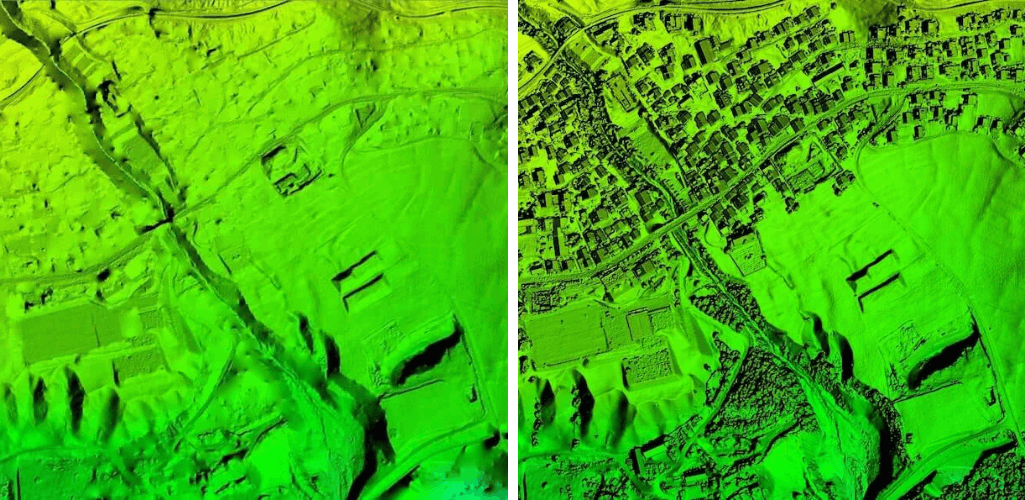
Again, notice how the DSM shows the tops of houses and vegetation; features which are not present in the bare-earth DTM.
How Can Drones Help Generate DEMs, DSMs and DTMs?
Drones are a cost-effective, quick and effective data collection tool for DEM, DSM and DTM generation.
Advancements in technology in recent years has led to the development of drones which can conduct photogrammetry and LiDAR missions.
Both of these applications are fundamental to creating DEMs, DSMs, and DTMs. Our LiDAR vs Photogrammetry guide presents an in-depth comparison between the two, but in a nutshell:
LiDAR: An acronym of light detection and ranging, LiDAR works by sending pulses of light to the earth's surface or a feature on it and measuring the time it takes to reflect back. This gives an accurate positioning point of where on the earth's surface the laser hit and this data can be used to build a 3D point cloud which represents the scanned area's terrain, topography, and features.
Photogrammetry: The art of capturing high-resolution photographs to recreate a survey area. These images are processed and stitched together using sophisticated software to create realistic, geo-referenced, and measurable 3D models of the real world.
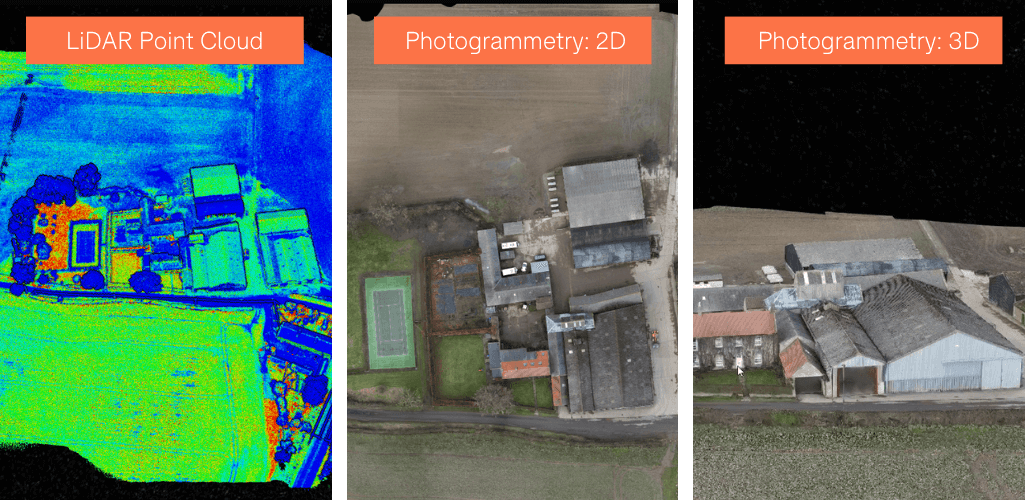
As the above highlights, there are clear differences between LiDAR and photogrammetry.
Therefore, careful consideration is needed before deploying these drone mapping techniques for DTM, DSM and DEM generation.
LiDAR, for instance, is particularly effective for capturing DTM data, compared to photogrammetry - especially in high-vegetation areas.
Why? Because by its very nature, LiDAR can penetrate gaps between leaves and branches to reach ground level, therefore obtaining more accurate data of the terrain.
In contrast, vegetation can hinder drone photogrammetry from acquiring an accurate representation of what the ground topography looks like: In essence, it will just capture to top of the features protruding from the earth's surface.
This excellent graphic below - created by Ben Bishop, Technical Director at Flythru Limited - shows the difference between LiDAR and photogrammetry for DTM generation.
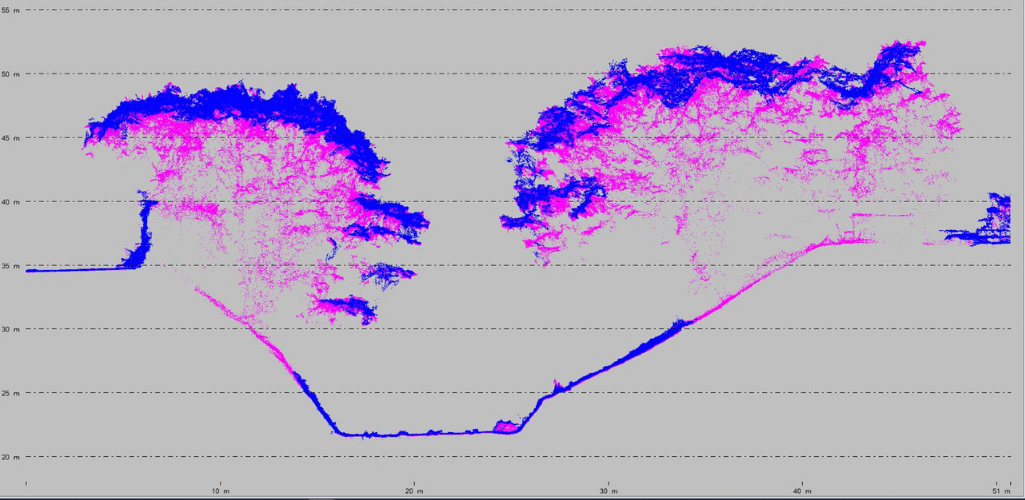
In this example, the LiDAR data is pink and the photogrammetry is blue. Notice how the photogrammetry does a great job in capturing the tops of trees, but cannot compete with the LiDAR when it comes to obtaining terrain information in the areas obscured by the vegetation.
For this reason, photogrammetry becomes more effective for DSMs.
Remember, DSMs represent both natural and built features on the earth’s surface, such as tree canopy and vegetation changes.
Therefore, the high-resolution images collected during a photogrammetry mission are beneficial for building these types of maps. But LiDAR, too, can also be utilised for DSMs.
Best Drones For DEMs, DSMs and DTMs
DJI has engineered numerous drones for aerial surveying missions, in particular the M300 RTK and Phantom 4 RTK.
Out of these, the M300 RTK is best suited to creating these models as it can be integrated with photogrammetry and LiDAR cameras.
The DJI Zenmuse P1 (below, left) is a dedicated photogrammetry camera with a 45MP full-frame sensor, while the DJI Zenmuse L1 (below, right) is a LiDAR sensor with photogrammetry capabilities.
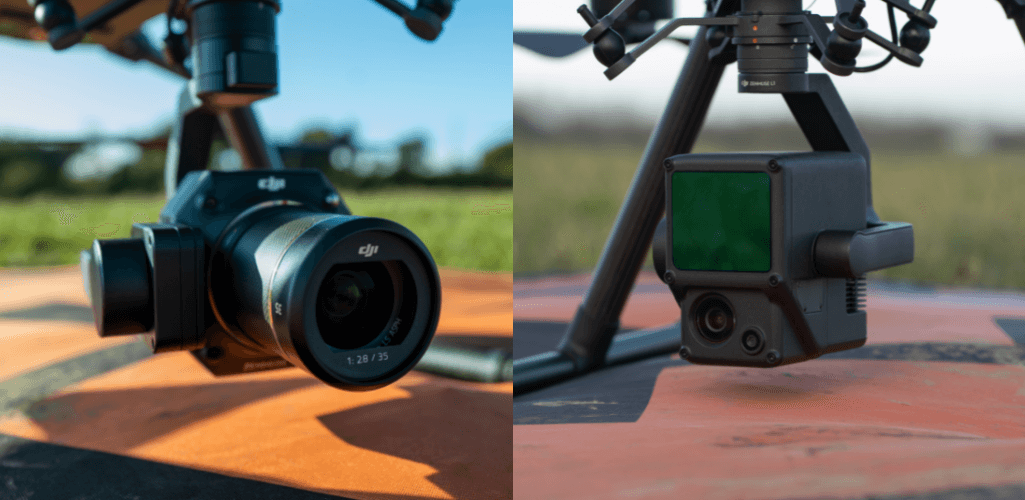
The M300 RTK coupled with the P1 or L1 makes aerial surveying highly accessible - especially in the case of LiDAR data capture. And, thanks to a combination of the drone's enhanced endurance and the cameras' individual specs, this pairing presents an incredibly efficient mapping solution, covering large areas in short spaces of time.
Meanwhile, the Phantom 4 RTK is a compact and low-altitude drone surveying solution, but has a fixed 20MP photogrammetry camera. Therefore, while it is an effective drone surveying tool, it lacks the versatility of the M300 RTK as it cannot be integrated with LiDAR.
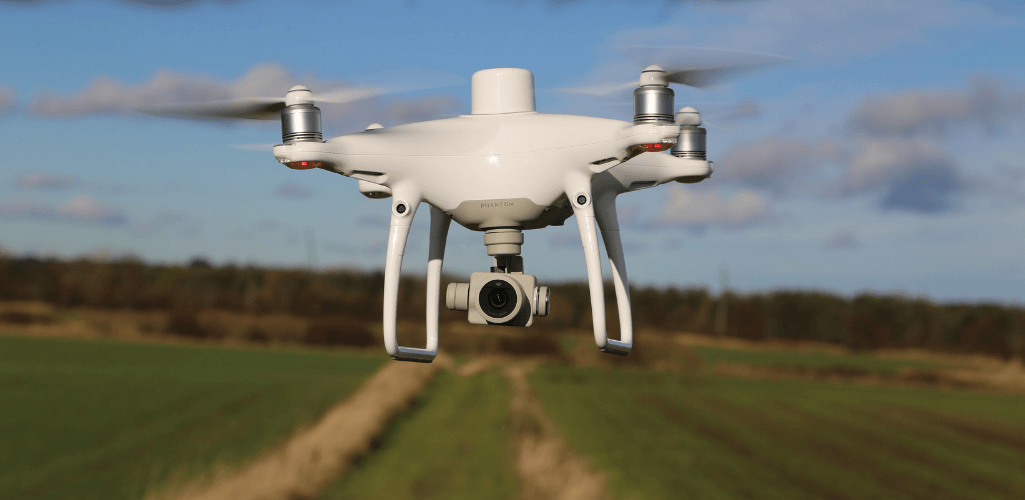
DEMs, DSMs and DTMs - Types of Applications
DEMs - incorporating DSMs and DTMs - are critical in areas such as infrastructural management, hydrology managing coastal erosion, archaeology, flow-direction studies, land-use and city planning, and following landslides.
Drones, DEMs, DSMs and DTMs - Summary
Drone surveying has become a major industry application and DEMs, DSMs and DTMs can form an important part of mapping projects.
Unmanned aircraft make it easier to collect the data needed for these types of models.
Choosing between a DEM, DSM and DTM is dependent on what type of information you require, while deciding between photogrammetry and LiDAR is also a key consideration.
But like all data outputs associated with drone surveying, these digitised assets provide rich insights about your job site which can drive decision-making and ROI.
